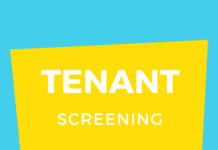Justin Alanis took a personal frustration within the rental industry and turned his idea into a $57 Million all cash acquisition. In this episode, Justin shares his story on raising money, having less than 3 months of cash left, and what eventually led to a major acquisition by Real Page, a $7 Billion publicly traded company.
Justin describes how he went from an idea to getting his first $25k check from Sean Conway, his good friend, to help with getting things set up. He leveraged FOMO (Fear Of Missing Out] and salesmanship to sell the idea to customers before a single line of code was even developed. This led to his first $1.2MM seed round, which eventually led to raising over $20MM from institutional VCs and ultimately an exit. This is his story.
Transcription
Dan Daugherty
Welcome to the very first episode of the Big Exit, I’m your host Dan Daugherty and I’m very excited to have Justin Alanis as my first guest. Justin built and sold his previous company for $57 million in cash to Real Page in 2018. Justin, thank you for joining us.
Justin Alanis
Thanks for having me Dan, I did not realize that I would be the first guest, I’m honored.
Dan Daugherty
Well, thank you and, as you know, we go way back. For the listeners listening. I met Justin – Gosh, probably what seven or eight years ago when you first closed your seed round and we were at a conference – I think in San Francisco it was probably AIM or NAA and you had a small little booth. I think it was you and one other person and you and I hit it off. Fast forward eight years later and you having a really big exit to Real Page, which is a publicly traded company worth about seven billion dollars.
Justin Alanis
Yeah, it was an amazing journey now that you think back all the way back to that time. Probably when I met you, we probably didn’t even have a product yet. Frankly, we were probably pitching vaporware at the time, but ultimately, as you know, we were able to build what our customers wanted and yeah did have a relatively successful exit to Real Page at the end of the day.
Dan Daugherty
Well, let’s start at the very beginning. Why did you build Rentlytics? What challenges or problems were you solving for?
Justin Alanis
I think, like a lot of other entrepreneurs who don’t come from the tech world or maybe even some that do come from the tech world, I was solving my own personal frustration in my previous job. I started my career in commercial real estate – private equity and I bounced around to a couple of different companies and started out as an analyst early on and then rose up to becoming a VP and partner at a large real estate private Equity Company.
All throughout my journey. I saw the same problems over and over again. The problem really revolved around data and access to information. It was crazy to me that I was running a multibillion dollar portfolio and yet I didn’t have access to my information, except on maybe a monthly or quarterly basis.
The information was not that good when I got it. It made no sense to me that I could not get access to information in real time to be able to make more sophisticated and data driven decisions across my portfolio. So I I moved to San Francisco in 2010 to be with my fiance at the time, now my wife, and I saw my other friends in technology. I had built up a relationships and friendships with a lot of people who were in and around tech, and I saw these different exits happening and I came home one night to my wife and I said man, you know my buddy saun, who is my my really good friend Sean Conway, who sold his company Notehall to Chegg at the time and then he started pillow and sold that to Expedia, and I happened to be a little bit of a part of pillow as well, and Sean was one of my first investors in Rentlytics and I I came home. My wife was like. Did you see Sean, sold this company, for I think it was like $10 or $12MM bucks, and I said Man I was like that’s crazy, like you know, do you think I could do that? She’s, like yeah, you could definitely do that. Well, what’s the biggest problem in your industry- and I said well, it’s data and access to information and she said well, why don’t you go do that then?
So I spent the next. I don’t know, probably six months, just ideating with friends, people like Sean, who are helpful to me and learning more about how to actually build a tech company. How to actually build a product- and this was early before all these resources that we have today which are available to early stage entrepreneurs. It’s amazing the amount of information and feedback. That’s now out there for anybody to consume, but back then it just wasn’t available and so really I did it the old fashioned way. Just talking to friends going to you know like early early stage, YC Demo Days and Events and learning about the industry, and so I eventually figured out that this is something that I wanted to pursue.
I went into the CEO of my company and, I said, “Hey, this is something I’ve been working on the side and ideating on, and I think I want to go do this.”
Dan Daugherty
So, then you have this idea. You have, I’m assuming Sean who was your first angel? Was it Sean?
Justin Alanis
Yeah? It was Sean actually, so he was a great friend of mine. I sat down with him. I started white boarding out product ideas and- and you know, Sean like any good entrepreneur and any good investor saw an opportunity I think, to get a maybe better deal than if he came on board in the seed round. So I made him an advisor and gave him common shares and a pretty healthy advisory package, plus he invested at a discounted rate that then converted into our seed round when we actually raised- and so he invested, I think twenty or twenty five thousand dollars with he and his partner Justin Miller, and so it was a small amount of money. But it was enough to get us going. We didn’t pay ourselves a salary, but we had enough to at least start paying some expenses. Things like AWS and getting our name out there. Going to pitch events and things like that in order to start getting some traction and actually start getting out there with customers and talking to them about their pain points.
Dan Daugherty
It sounds like that was a SAFE or a convertible note?
Justin Alanis
It was, yeah. I don’t think SAFE existed at the time, but so it was more of a convertible note and we eventually did it SAFE in a later round, but SAFEs, I don’t think we’re around at that time.
Dan Daugherty
Okay, so you had your convertible note, you probably got other investors on board and then you started to do a proof of concept. You did your MVP (minimum viable product) and then did you raise from there did you then raise a series A or how did that go?
Justin Alanis
Yeah. So, after that, what we did was we used that opportunity to start actually building our product and building a proof of concept. What you call an MVP, though we didn’t launch the actual product to customers for another year after that, but we used that opportunity to demonstrate early product market fit.
We would go into customers,’ large private equity companies similar to where I came from and say, “hey. I know you have this problem,” because over the prior six months I had been meeting with people at conferences asking them, “How do you do this?” and everybody said the same thing? “We compile the data with Microsoft Excel and we have a team of analysts that do it.” So I knew that this was a problem, so I walked into these people, and I had a presentation with some screen shots of the product that we hoped to build one day, and I said, “if I built this, would you buy it?” A resoundingly across the board everyone said yes, and so I had these early customers sign an LOI. It was a nonbinding letter of intent that said that they would buy it for a dollar a unit a month, so twelve bucks a unit a year and I was able to drum up about sixty thousand units of interest. You know several hundred thousand dollars of potential ARR at the end of the day, and then we parlaid that into an investment.
So I went around Silicon Valley and happened to get in with Trinity Ventures. One of my buddies introduced me to Trinity Ventures and I walked into the office with my co-founder. Who is also, the CTO of the company- and I remember Noel Fenton, who was one of the founders of Trinity Ventures and he had invested back in the day in Loopnet and a number of other PropTech companies.
He sat down and said, “okay, you know we get ten thousand applications or decks and we talk to a hundred and we invest in ten every year. You guys are now at the hundred stage and you know we’ll see if you can get to the ten.”And so he sent one of his EIRs, a guy by the name of Tom Burn who was the former president and COO of Loopnet and then had become an EIR at Trinity Ventures.
And Tom was doing a lot of real estate tech and investing at the time, so he sent Tom out to meet with us and before the end of that conversation, he said: “okay, I’m in. I’m going to invest.” And so that opened up the floodgates, having a name like that, an early name like that. It just needed that one person to lend credibility to the venture that we were doing and then all of a sudden it was like we couldn’t fill the round fast enough.
Trinity Ventures wanted to be in. Other VCs wanted to be in. Other angel investors wanted to be in. It was all because of Tom Burn being the first kind of brand name and establishing the round structure. He put in I think a couple hundred thousand dollar check and we were off to the races.
Dan Daugherty
Wow. So a couple of things. I love how creative you were in really proving out the monetization prior to even having a product that you could actually sell and obviously that resonated well with the contacts within your space to take the leap and invest. What I have found is many investors, obviously invest in the team first and foremost, but also having that proof of concept where you actually had a couple hundred thousand dollars worth of commitments with your letter of intent, which I think is amazing.
That’s super creative. So that led to the Series A and gave you additional funding to then grow this out?
Justin Alanis
That was actually the seed round and we raised, I think $1.2MM, and then we started actually building real products, and so we hired a couple more engineers and realized that building out what we were building was much more difficult than we originally thought. It would be the amount of data aggregation that went into this in terms of aggregating data from old legacy technology systems that existed in the space was no small feat. We realized that there was no robust apis in the ecosystem, so we couldn’t just tap into their API infrastructure. Instead, we had to do all sorts of creative things to get access to this information, and most of it was actually pulling data from static reports that our customers were used to using on a daily weekly and monthly basis. Things like monthly activity reports and monthly financials and daily custom reports, and pulling out rental information and tenant information and financial information.
And so we had to build this very robust data infrastructure that would kick up servers every night and then then slow them down every morning and it would be a nightly batch processing, and then we also had to figure out how to build out the UI and what customers actually wanted from the UI perspective.
Was this going to be a Workflow tool or was this going to be more of a true business intelligence tool? And so we had to make some decisions like tha. I can tell you my background of not knowing how to build technology companies and not knowing much about technology at the time really hindered us in those early days because it took us a while to get product market fit and build the product. But ultimately- and I wish we had all the resources that we had today in order to help us navigate through those times. But ultimately we ended up doing it. We ended up launching a product. It took us a year and a half I think, and we actually had to raise a little bit of a bridge round in order to bridge us through that period and existing investors stepped up and and we were able to prove even more demand as we were building the product and we were able to raise another three million dollars during that time period, and so we were well capitalized and then we launched, and it just took off.
There was just so much pent up demand in the industry and there was no competition at the time and then Real Page and Yardi, shortly after we launched our product, they launched their own BI products. It was like this race to build the analytics products that the industry so desperately needed, but we had a unique advantage in that we were the only agnostic tool in the industry. We could tap into many different systems that folks used. And so, if you were a single stack owner and manager, you could go with Yardi or you could go with Real Page. But we started the genesis of our company being agnostic in nature, so that if you were an owner like one of our customers who later became one of our largest customers, Blackstone or another, one was Starwood Capital. Blackstone had fifty thousand units and they had thirty five different managers in systems that they were trying to access stats from. You could imagine the headache going through on a daily basis, and so we were able to tap into all thirty five of those different systems and aggregate that information and give them one unified source of truth for their information. That was a game changer for companies like those that didn’t have a Real Page and Yardi, who are clearly the juggernauts within the space.
Dan Daugherty
Did that motivate you to roll out additional features, or did it scare you?
Justin Alanis
A little bit of both. I don’t think it scared us so much as it led us to make certain decisions that perhaps we would not have made in other circumstances. The pressure of competition made us, I think, a little bit more reactive to our customer needs and demands, and when you’re building enterprise SASS, I think it ended up hurting us. For example, we built a ton of custom features and dashboards for specific customer needs, like Blackstone and Starwood Capital. When they represent 20 to 30% of your customer base it causes you to say, Okay, listen. You have this problem. This person has this problem: let’s build a unified product, you’re trying to solve this more immediately, because you know that the threat of them potentially leaving down the road where one of those other companies was significant. Also we saw a changing landscape during that time period where initially we had this, call it blue ocean of opportunity in front of us, but what we found is that because Yardi and Real Page had an imbedded customer base, they were able to cross sell this product into and bundle this product into their offerings.
That created an ecosystem where in most cases, they won. Those deals were not able to even get in the door and compete on those deals, and so we would come across companies that said, Yeah we’re using Yardi or we’re using Real Page. It’s like well, did you go through a competitive process? Did you get other technologies ’cause? We knew that we were the superior technology, but a lot of these folks at the time just weren’t doing their homework. They weren’t as sophisticated as they are today and they went with an easy approach and Yardi and Real Page were using tactics like bundling their BI platform in for free for the first year. But then, when you had to renew, then you had to pay for it and it put us in a situation where it was tough to compete under those circumstances.
Dan Daugherty
What did you do? Did that help accelerate raising additional funding? Did it also make you start thinking about selling the company or was it a little bit of both
Justin Alanis
I think we had always wanted Rentlytics to be a really large company. I think, actually, $57MM, if I look back on what my ambitions were when I started the company, I would have told you at the beginning that that would have been a failure. Now. I look back on it differently now, clearly, because circumstances changed and the landscape changes over time, but ultimately it caused us to look at the situation in more realistic terms.
We weren’t able to build, I think, a materially differentiated product that had network effects and other really important factors that create huge defense abilities and moats at scale. And I think that was more at the nature of the problem that we were solving rather than the product itself, and as a result of that, what happened was that we were able to get to about a million units when we ultimately sold the company, which represents probably somewhere around five percent of the total market.
And when you looked at the total addressable market for what we were building just straight up, if you did the number of units times the price per unit that we were charging, our total addressable market was more like two hundred to hundred million dollars. This created an environment where we were competing with these big juggernauts. They were eating some of the market, so we didn’t have nearly as much room to grow.
We had other ambitions to build technology that I would say, would be differentiated at scale. Things like benchmarking and using our data in really interesting and unique ways but we were just never really able to get to that second act because we were so busy building our core product, and so we were never able to reach escape velocity for the business. We were growing nicely over a hundred percent year over year, but we just never felt like we reached that point where things just felt frictionless and they always felt like they were full of friction. I know that with most startups, that’s the case but never felt like we just kind of reached that next level. And so with all those things having been in existence, raising money started to become more difficult as we grew.
As we raised our series A, it became somewhat difficult. We raised some strategic capital plus tacked on some venture capital. We raised ten million dollars in our series a but then, when we came to our series B, things started getting a little bit even more difficult, because people really questioned our TAM and whether we could move outside of our core market and start creating other products that would increase our total addressable market opportunity. The venture capital folks looked at that, I think, and what they want to see is, Can I add fuel fire here? Do you have a product where A PLUS, B, equal c like if I just throw water on this and you’ve nailed your customer acquisition? Can this grow to be a billion dollar company? And with our core product, that was clearly no, and so it left us looking at this and saying well, this is going to take more R&D effort which costs money. Then you’re going to have to take new products to market which is going to cost even more money and there’s no guarantee that those products are going to be successful, and so it caused a situation.
Finally, after a six month effort, we get a series b term sheet. Then, on the day of closing to no fault of our own frankly, our Series B partner walked away. You know it was a weird circumstance: They were a new fund. There was a VP who was running the deal, who probably didn’t have the authority that they said they did. We signed the term sheet, all our investors were on board and then they took the offer back basically on what was supposed to be the day of closing.
It was a really tough situation, probably one of the worst days of my professional career and that was a tough one to overcome because we only had, I think at that point three months of runway left, and so we really had to look across the table at one another and say: What are we going to do?
Dan Daugherty
Wow, so was that the turning point?
Justin Alanis
Yeah, it was the turning point.
First of all picking up where we left off with a series B. We had talked to so many folks throughout that process and gotten over a hundred no’s and we got one yes and then when we started moving into how to fix this situation, we looked across the table and all of a sudden, some of our venture partners started taking advantage of the situation. We got one term sheet from one venture partner, not Trinity Ventures by the way, that we thought was an atrocious offer where they wanted to do a cram down on the CAP table for people who didn’t commit to the round.
Iit would have diluted our control and our equity and pretty much the entire company would would have been given control over to this private VC or over to this PE group, and then a couple of our strategic partners came together and basically bridged us with a loan to get us to the other side/ So that whole process was really stressful, tried to manage it very respectfully during that time period, but ultimately were able to raise $4MM. As part of that agreement, we said to all of our investors and ourselves, we owe it to the company to not just go down the series b route, but we also should explore a sale opportunity and so then, for the next six months we went on a dual track path and we hired a banker and we evaluated what a sale would look like while continuing down the path looking at what we could get from a series B, partnership.
Dan Daugherty
So you hired an investment banker and did they get a percentage? How did that work? Did they get a percentage of what the exit would be?
Justin Alanis
They they did. They got a percentage that was escalating based on the price, so we went and we interviewed many different investment banks and one rose to the top.They had done other transactions in and around our space and actually sold a couple of other companies to Real Page. And so we thought that, based on where we were in terms of price, that they really fit what we wanted and they understood our technology and they understood the vision for what we were trying to do with Rentlynix.
It was kind of a no brainer for us to move down the path with them and we negotiated a little bit on price. But it wasn’t that big of a sticking point for us. Frankly, we wanted the right investment banking partner. Ultimately, in order to take us out to market, create and craft the right narrative and message for us and also show what the opportunity could be under the right organization. And so I can’t remember what the numbers were exactly, but I remember that they had a fixed fee up to a certain price that they thought we’d sell at and then, as we hit different hurdles for different prices, they would get an accelerator.
Dan Daugherty
So they helped you with putting all the narrative together, isolating the potential partners that could acquire you guys, obviously Real Page and I am sure Yardi and some others were part of that, and then what happened? Did they start setting up meetings for you and the executive team to start pitching?
Justin Alanis
Yeah, we spent about two months really preparing the narrative, preparing the initial deck, and the story around it: preparing the financial model and getting all of our data room and information together. The entire process from beginning to end took about from the time that we hired an investment making partner or actually started searching for investment being a partner to the time we sold the business, it took about nine months. And so, and I think that was the expectation that they said early on. Although I think that we originally thought that we could go faster, if you think about all the different segments and things that need to happen associated with a sale, it took that long.
Sso we got all of our information together and then we put a list together of people and we tiered them out. Tier one two: Three: We wanted some warm up where people we knew, who weren’t going to be even remotely be interested or maybe marginally interested, or we wouldn’t be interested in selling to them. We wanted to go with them, first get our reps in and then we went to some of the companies that we thought were really potentially interested in buying us and could pay top dollar for the business.
And so we segmented them into private equity companies, as well as publicly traded or privately held companies. But what we’d call more strategic acquirers and we knew that the strategic acquirers would be willing to pay more, but we also wanted to go down the path of the private equity partnership route, just in case there was a compelling deal to be had there and then you had.
Dan Daugherty
What happened? Was there like two or three that started competing? Was there only one that was really the best fit? What made you guys decide to go with Real Page?
Justin Alanis
yeah? So we went down that path with I don’t know forty initial meetings and it really quickly started to whittle its way down, and one company was particularly interested, not Real Page, but I I don’t think I can actually say their name due to NDA, but one company was particularly interested and actually, in the beginning of this process, we decided strategically that we were not going to go out to Real Page and Yardi, at least at the beginning, and if we were going to introduce them into the process, it would be much later in the process and the reason we did that was because they had competing products.
We felt a little sensitive to the idea that well, first of all, we didn’t think that they’d be actually interested in buying us because they had competing products already. We kind of eliminated them because they’ve never really been active or engaged in acquisitions, and they typically build themselves. But, Real Page was interesting. At that time, I didn’t have a relationship with Steve Winn. I met him once in passing, and so we were not involved in this process of meeting with companies.
Then NAA happened down in San Diego and I got invited to a dinner. This was at the time now two big public traded companies were involved in the process and they were starting to bid on the business and they were direct competitors with Real Page, and I just so happened to go to this dinner and Steve Winn was there and I ended up sitting next to him at this dinner.
It was a buddy of mine named Sina, who ran the dinner and Chris Herndon, who now runs a company called The Gild. I sat right next to him and he looked at me and said, “how’s your business going?” and I said “You know we’re doing pretty well actually Steve. We’re in the process of potentially selling the business or getting acquired, and two of your biggest competitors are currently bidding our on our business, and I don’t know if you guys would be interested. But you know, if you are, let me know. We would enjoy discussing it with you.” And literally during that dinner, Steve tried to put out his hand after we started talking. He asked me about metrics and said: Oh, we definitely are interested and he tried to basically do a handshake deal right there at the table. Literally right rhere, he said I’ll do that deal right now for this price and I said. “Steve, I can’t commit that. I said I gotta talk to my banker, but here’s what I can promise you as I can get you involved in the process, and we can give you that information.” So at 3:00 am that night, Steve emailed me and I looped in our banker. They had already known each other. He hooked in their head of acquisitions, Mike Britti, who’s a great guy and really helped us through the process, and then we then had a competitive process with one really hungry company and two other companies that really wanted the business, and it was a situation that you kind of dream of when, when you go through the sale process.
Now all the while we had at the same time secured a series B partnership and we had a term sheet with mass mutual ventures who we really loved those guys, and so we, the evaluation, was a little lower than we ultimately sold for, but we had optionality on the table, and so we had gone from a situation six months prior where we were dead in the water. Looking at each other and hoping that the business didn’t go under to a situation that was fairly enviable.
Dan Daugherty
You could potentially do alright, so Steve Winn, they’re interested, it’s an all cash deal, so you got no real paid stock correct?
Justin Alanis
Well, I got stock from a management incentive package that they put together for me, but the deal itself was all cash, and you know one of the reasons we structured it that way and didn’t structure it with an earn out was because we didn’t quite know how the products, their product and our product would ultimately come together and- and so it made us, I think, all feel uncomfortable without a true understanding of what the revenue targets would be for the combined products and knowing that the integration and figuring out how to actually combine these products and how to maneuver through the customer, the two different customer bases would be challenging, and so we weren’t willing to go there, and I think that they completely understood that, and so we always positioned it as an all cash deal, and we went through different series of negotiations where, ultimately, we went through a best and final process and Real Page came in with the better number by about 8% over the the nearest other two companies, and so it was for us Real Page had the, I would say the worst terms in terms of things like liability and indemnification and fraud, and and we knew that their due diligence process was going to be really difficult because Brad had been through it before and said these guys are tough through the process but they will get the deal done and we had a larger holdback as a result of going with Real Page.
But ultimately, the deal made sense for us and Real Page lived up to their word ultimately, and we got, I think we had a fourteen percent hold back and that was based on things like fraud and negligence and other things like that and not earn out and- and they have been true to their word in terms of delivering on the next payments as well as they gave the team a nice management incentive package to be able to stick around for for a period of time.
Dan Daugherty
That’s a great story, and if you were to do things all over again with you know, with your new company, let’s say you exit in a couple of years. What would you do differently?
Justin Alanis
I think most of what I do differently actually happens at the beginning of of the company, because that sets such a trajectory for the company and so before I started this new business, I sat down and thought through where did we start? Where did the trajectory go a certain direction with Rentlytics, and what decisions really made it so that we exited for fifty seven instead of five hundred and seventy million and ’cause I do generally believe that if I knew what I know now and if I were starting Rentlytics over, I think that at that time that we could have had a five hundred plus million dollar exit. I think the opportunity was there. I just think that we made some missteps in the early early stages of the business, and so that’s been a really important lesson for me and one of the first and most important lessons for me was making sure that I had really great cofounders surrounding me at this business.
That was the first thing I did in my new start up, as I made sure that I had people who rounded out my skill sets and made up for my weaknesses of what I saw as my greatest weaknesses in Rentlynics, and I think that was the biggest lesson for me is to make sure I have really good people next to me at this new business, where it can be a real true collaborative team effort from a founding perspective and be able to grow a company together and people who have done it before.




















